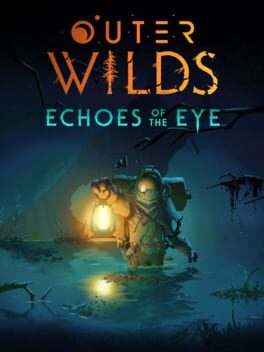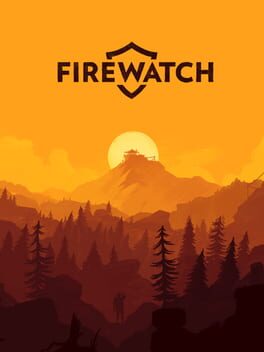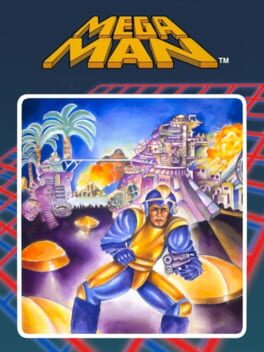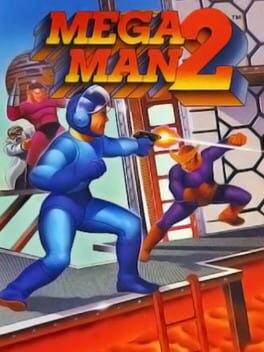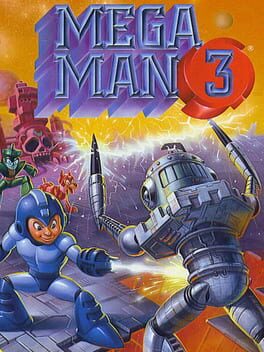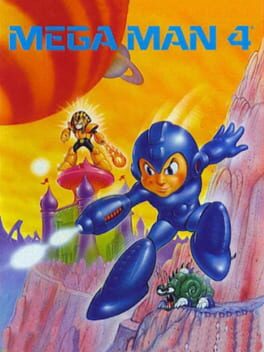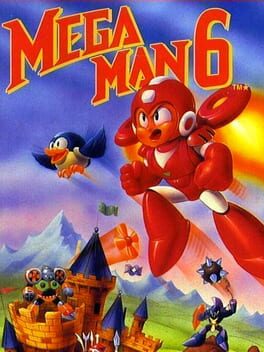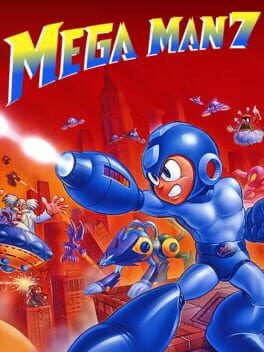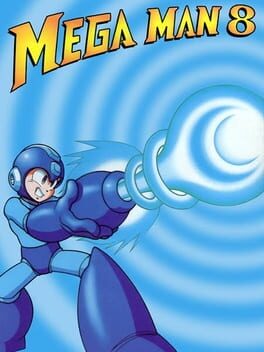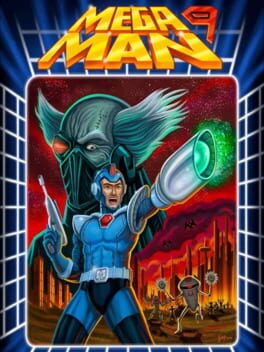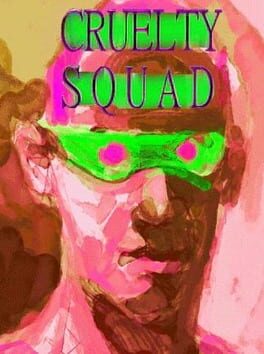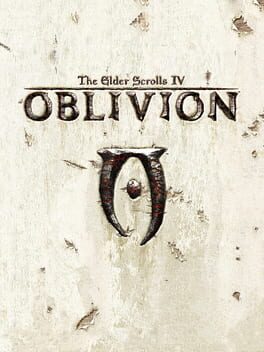ItalianRobo
2019
This review contains spoilers
This is a perfect game, in all honesty. Or at least it's perfect ideal of the game it sets out to be.
The simple fact that there are no barriers within the game, no progress checks, that everything is consistent through each time loop outside of the player, is the key to making this game so special. You progress through this game by learning, learning more about the Nomai, more about the physics. This creates perfect ludonarrative harmony.
It's been a year or so since I've played this, so I don't have much more to add. Though I will give one criticism. The Nomai don't feel alien enough; their culture is basically human. And while there is an attempt to have their writings be nonlinear, hence the spiral of their writing, it ultimately fails to actually be nonlinear. The Nomai are ultimately very familiar to us, so exploring their ruins, and reading their texts doesn't really resemble the work of an archaeologist or anthropologist. I have some disappointment about this, but ultimately it's good that the developers made that sacrifice. The feeling of connection with the millennia-old Nomai, and that you, as a scientist, are building off, continuing, and ultimately fulfilling their research, is beautiful.
The simple fact that there are no barriers within the game, no progress checks, that everything is consistent through each time loop outside of the player, is the key to making this game so special. You progress through this game by learning, learning more about the Nomai, more about the physics. This creates perfect ludonarrative harmony.
It's been a year or so since I've played this, so I don't have much more to add. Though I will give one criticism. The Nomai don't feel alien enough; their culture is basically human. And while there is an attempt to have their writings be nonlinear, hence the spiral of their writing, it ultimately fails to actually be nonlinear. The Nomai are ultimately very familiar to us, so exploring their ruins, and reading their texts doesn't really resemble the work of an archaeologist or anthropologist. I have some disappointment about this, but ultimately it's good that the developers made that sacrifice. The feeling of connection with the millennia-old Nomai, and that you, as a scientist, are building off, continuing, and ultimately fulfilling their research, is beautiful.
Hate to say it, but this is also perfect DLC. It's meaningfully separate and distinct from the base game, while also being good for the exact same reasons the base game is good. You get a new mystery, a new history to uncover, new mindbending things to learn, and, what's key to this being great DLC, a new way to learn and interact with a bygone civilization
2016
This game mostly succeeds in its goal of trying to capture that feeling of hiking and exploring around a mountain. The environment is beautiful, and traversing the terrain rarely feels tedious over the course of the game's short story. It also captures a sense of solitude pretty well, though it's not exactly solitude since you're constantly talking over the radio. I guess this game captures the feeling of being alone but constantly talking to someone over a walkie-talkie and getting to know them and grow closer to them. It feels genuine and it feels nice.
Unfortunately, this game is also tied to a super boring mystery. While I wasn't particularly interested in the MC's or Delilah's backstories, I was dreadfully bored by the mystery that occupies this game's last chunk. Also, there isn't really any catharsis in the reveal at the end, because it doesn't at all explain everything. Boring story, but who cares if the gameplay is good (weird to say for a walking simulator lol)
However, the gameplay is also flawed. Throughout the mountain, there are temporary barriers. Overgrown foliage blocking paths, spots where you need a rope from above to climb, and gaps that can only be crossed by cutting down a tree. I like the fact that you have to set up ropes at the top of inclines to move up and down them; it makes you feel like this space on the mountain is becoming more familiar and accessible to you. But tying off those ropes, you are helping yourself; it feels genuine. The overgrowth blocking paths does not feel genuine. For the majority of the game you can not do anything about this overgrowth; you need an ax to clear it. Why an ax wouldn’t already be included in the tools given to fire lookout by the Forest Service, I don’t know. And when you finally get one in the eleventh hour of the game, you just click the button, a short animation plays, and the overgrowth is gone forever. It’s very nakedly a function of the game stopping you from accessing certain areas, and that detracts from the feeling of exploration.
Also, you don’t actually do any actual work in the game; you don't use any fire spotting tools. In the center of your room atop the tower is an Osborne Fire Finder. This game is the only reason I know about it, but it’s so kickass. Obsolete analog tools like this are pretty common in this genre, and I think it’s criminal that something as cool as that is present but never used.
Unfortunately, this game is also tied to a super boring mystery. While I wasn't particularly interested in the MC's or Delilah's backstories, I was dreadfully bored by the mystery that occupies this game's last chunk. Also, there isn't really any catharsis in the reveal at the end, because it doesn't at all explain everything. Boring story, but who cares if the gameplay is good (weird to say for a walking simulator lol)
However, the gameplay is also flawed. Throughout the mountain, there are temporary barriers. Overgrown foliage blocking paths, spots where you need a rope from above to climb, and gaps that can only be crossed by cutting down a tree. I like the fact that you have to set up ropes at the top of inclines to move up and down them; it makes you feel like this space on the mountain is becoming more familiar and accessible to you. But tying off those ropes, you are helping yourself; it feels genuine. The overgrowth blocking paths does not feel genuine. For the majority of the game you can not do anything about this overgrowth; you need an ax to clear it. Why an ax wouldn’t already be included in the tools given to fire lookout by the Forest Service, I don’t know. And when you finally get one in the eleventh hour of the game, you just click the button, a short animation plays, and the overgrowth is gone forever. It’s very nakedly a function of the game stopping you from accessing certain areas, and that detracts from the feeling of exploration.
Also, you don’t actually do any actual work in the game; you don't use any fire spotting tools. In the center of your room atop the tower is an Osborne Fire Finder. This game is the only reason I know about it, but it’s so kickass. Obsolete analog tools like this are pretty common in this genre, and I think it’s criminal that something as cool as that is present but never used.
1987
Unfortunately, the first game of the series is kinda bad. While this game has the control that puts mega man head and shoulders over the majority of NES platformers, none of the things that makes MM special are here. The level design especially suffers. The platforming gimmicks that make good MM levels are pretty lackluster here. The Guts Man platforms are the closest thing to being good, but the wonky way it shoots you down whenever a platform drops kinda ruins it. Plus, the music and boss fights are just kinda below the standard that the series would go on to set. Also requiring you to either play Elec Man’s level twice or beat the robot masters in a certain order to get the magnet beam and complete the game is very lame.
Particular lowlights are the yellow devil fight (though it's cool conceptually) and the footholder sections in the Ice Man and wily stages.
Particular lowlights are the yellow devil fight (though it's cool conceptually) and the footholder sections in the Ice Man and wily stages.
1989
It’s the most iconic mega man game for a reason. Everything takes a big step up. The level design is tremendous; they clearly have learned how to create and use platforming gimmicks. The music is, obviously, top notch. The graphics are given much more detail than MM1. And this is the best grouping of 8 robot master boss fights.
Here, the key is variety. The Wood Man fight is completely scripted, all you have to do is survive it and get damage in when possible to cut it short. Crash Man only responds to your inputs (only running back and forth if you don’t do anything). Quick Man seems to be completely random in his actions, making it impossible to really learn a pattern. And the others all fall somewhere on that spectrum of randomness between Wood Man and Quick Man. So too, does variety play into what makes the levels so good. Quick Man’s stage is famous for its instant death laser beams, making the challenge in that stage purely about platforming, and, crucially, quick platforming. Wood Man, on the other hand, doesn’t really have a stage gimmick, and bottomless pits are never really a threat. Rather, his stage is made difficult by the presence of the different meaty enemies in his stage. You need to go slowly and take your time to fight the enemies. Both stages are difficult, but in different ways and that’s what elevates this game.
The negatives in this game are the weapon selection and the late game. While I don’t really think any of the NES games have a GOOD selection of weapons, the overpoweredness of the metal blade just gives the excuse to never think about their weapons beyond trying to figure out boss weaknesses. In fact, so many stage enemies are impervious to the RM weapons, that you’re kinda punished for even experimenting. And for the late game, the first Wily Stage is iconic for all the obvious reasons. All-time great music, you genuinely feel like you’re invading a castle exterior, and an iconic boss with a fantastic introduction. Unfortunately, the rest of the game after that kinda sucks. The Boobeam Trap is probably the worst mega man boss fight ever. MM 1-3 all suffered through a tight development schedule that forced them to have to cut some corners, and that always shows in the late game.
Here, the key is variety. The Wood Man fight is completely scripted, all you have to do is survive it and get damage in when possible to cut it short. Crash Man only responds to your inputs (only running back and forth if you don’t do anything). Quick Man seems to be completely random in his actions, making it impossible to really learn a pattern. And the others all fall somewhere on that spectrum of randomness between Wood Man and Quick Man. So too, does variety play into what makes the levels so good. Quick Man’s stage is famous for its instant death laser beams, making the challenge in that stage purely about platforming, and, crucially, quick platforming. Wood Man, on the other hand, doesn’t really have a stage gimmick, and bottomless pits are never really a threat. Rather, his stage is made difficult by the presence of the different meaty enemies in his stage. You need to go slowly and take your time to fight the enemies. Both stages are difficult, but in different ways and that’s what elevates this game.
The negatives in this game are the weapon selection and the late game. While I don’t really think any of the NES games have a GOOD selection of weapons, the overpoweredness of the metal blade just gives the excuse to never think about their weapons beyond trying to figure out boss weaknesses. In fact, so many stage enemies are impervious to the RM weapons, that you’re kinda punished for even experimenting. And for the late game, the first Wily Stage is iconic for all the obvious reasons. All-time great music, you genuinely feel like you’re invading a castle exterior, and an iconic boss with a fantastic introduction. Unfortunately, the rest of the game after that kinda sucks. The Boobeam Trap is probably the worst mega man boss fight ever. MM 1-3 all suffered through a tight development schedule that forced them to have to cut some corners, and that always shows in the late game.
1990
Well, it’s just not as good as MM2.
This game introduces sliding and it fits in perfectly, a wonderful addition. Rush is also introduced, and I like how rush jet exists to bail you out if you don’t want to deal with a hard platforming section (similar to the role Time Stopper or Item-2 played in MM2 but more engaging). Both are great additions to the Mega Man formula. What’s a weird change to the formula is that the 8 robot masters don’t make a complete weakness wheel, rather there’s two separate wheels of 4. This means that you have to fight two robot masters without having their weakness. I’m not sure why they made this change, but it’s a bad one.
The highs of this game are enough to match the highs of MM2. Spark Man (both the stage and the boss fight), the Snake Man stage, and the Shadow Man fight are all great. Where this game suffers is in stretches of dullness. Hard Man’s and Magnet Man’s stages are both just boring. Magnet Man’s stage is especially egregious because they introduce two cool platforming gimmicks with magnetic pulls, but they don’t do anything with them. Combining magnets and disappearing blocks is a cool concept, but they design those sections in a way so that you never have to interact with the magnets. Also, proto man is a pretty boring miniboss and they make you fight him like 5 times.
The late game, after the 8 RM stages, suffers in the same way that MM2 does, but they’ve just doubled it’s length with the Doc Robot stages. Doc Robot doesn’t make for interesting boss fights, and they really don’t do anything worthwhile with the idea of revisiting stages, it’s just a tedious addition to the game.
This game introduces sliding and it fits in perfectly, a wonderful addition. Rush is also introduced, and I like how rush jet exists to bail you out if you don’t want to deal with a hard platforming section (similar to the role Time Stopper or Item-2 played in MM2 but more engaging). Both are great additions to the Mega Man formula. What’s a weird change to the formula is that the 8 robot masters don’t make a complete weakness wheel, rather there’s two separate wheels of 4. This means that you have to fight two robot masters without having their weakness. I’m not sure why they made this change, but it’s a bad one.
The highs of this game are enough to match the highs of MM2. Spark Man (both the stage and the boss fight), the Snake Man stage, and the Shadow Man fight are all great. Where this game suffers is in stretches of dullness. Hard Man’s and Magnet Man’s stages are both just boring. Magnet Man’s stage is especially egregious because they introduce two cool platforming gimmicks with magnetic pulls, but they don’t do anything with them. Combining magnets and disappearing blocks is a cool concept, but they design those sections in a way so that you never have to interact with the magnets. Also, proto man is a pretty boring miniboss and they make you fight him like 5 times.
The late game, after the 8 RM stages, suffers in the same way that MM2 does, but they’ve just doubled it’s length with the Doc Robot stages. Doc Robot doesn’t make for interesting boss fights, and they really don’t do anything worthwhile with the idea of revisiting stages, it’s just a tedious addition to the game.
1991
This is the first MM game where the developers weren’t rushed and that shows in two ways. First, there is a noticeable step up in the graphics. More details are added, backgrounds are rarely ever blank, and there’s little nice touches like Skull Man’s stage turning to sunset at the end. Second, and most crucially, the late game no longer sucks. In fact, it’s great. The Cossack and Wily Stages are just as good as the RM stages, and the fortress boss fights, while not as consistently good as the RM boss fights, are good and interesting because the bosses aren’t restrained to having to be, at least in size, Mega Man’s equal. The fortress bosses are able to take different forms.
Also, MM4 introduces charged shots. The approach to enemies doesn’t really change though. You can plow through this with buster shots the same way you could the previous games. I think this is a really good decision. Charged shots are optional, meaning they really only exist to make certain sections easier if you want.
In terms of quality, I say this game is just barely edged out by MM2. While the late game is obviously much better than MM2’s there’s enough spots in MM4 where the quality drops just enough to match it. Particularly, this game has weak midbosses. Ring Man’s stage, for example, has you fight two different midbosses twice, and both of them are not fun but take forever. The midbosses are too simple of fights, where only one or two things are going on, that they’re only able to be easy or annoying, and they lengthen these fights by only allowing a tight window for you to damage them.
But shoutout to Bright Man’s stage, such a good fucking level
Also, MM4 introduces charged shots. The approach to enemies doesn’t really change though. You can plow through this with buster shots the same way you could the previous games. I think this is a really good decision. Charged shots are optional, meaning they really only exist to make certain sections easier if you want.
In terms of quality, I say this game is just barely edged out by MM2. While the late game is obviously much better than MM2’s there’s enough spots in MM4 where the quality drops just enough to match it. Particularly, this game has weak midbosses. Ring Man’s stage, for example, has you fight two different midbosses twice, and both of them are not fun but take forever. The midbosses are too simple of fights, where only one or two things are going on, that they’re only able to be easy or annoying, and they lengthen these fights by only allowing a tight window for you to damage them.
But shoutout to Bright Man’s stage, such a good fucking level
1992
This game just doesn’t really leave too strong of an impression of me. There’s places I like, Gravity Man’s Stage and the collapsing tower stage (Proto Man Stage 4) immediately come to mind. But most of the game is just sort of mid. The late game has the potential to be as good as MM4’s, but the dark man boss fights are some of the weakest in the series. Napalm, Crystal, and Stone Man’s stages are all just kinda dull. Stone Man is a particularly bad offender due to both his stage and boss fight being mostly boring but both just taking forever. The bubble section of Wave Man’s stage is really cool, but they elect to do only one section and move on to a very mid jet ski section.
I will say though, this game is absolutely gorgeous. The shaking of the train rooms on Charge Man’s stage, the jet ski section on Wave Man’s stage, the purple exterior sections of the first Proto Man stage, and all of Crystal Man’s stage are all just so beautiful.
Also, it’s kinda fucked up they just made War Crimes Man
I will say though, this game is absolutely gorgeous. The shaking of the train rooms on Charge Man’s stage, the jet ski section on Wave Man’s stage, the purple exterior sections of the first Proto Man stage, and all of Crystal Man’s stage are all just so beautiful.
Also, it’s kinda fucked up they just made War Crimes Man
1993
This is my favorite Mega Man game. I think this is the high point in stage design; it sees the best use of platforming gimmicks in the series. The final spring section of Plant Man, the crossing of burning oil on a platform you have to pump to move of Flame Man, the rising and sinking submarine of Blizzard Man, and the inverted water sections of Centaur Man’s stage are all masterclasses in platforming design. And while none of the RM boss fights are particularly challenging, they’re all pretty easy to understand and that gives them a certain sort of satisfaction.
This game has my favorite MM soundtrack, and it also has the most beautiful levels, with Flame Man’ stage, Tomahawk Man’s stage, Knight Man’s stage, and the skyline of the first Mr. X stage all being highlights. And while I generally don’t think that branching paths and revisiting stages are a good fit for the classic series, Tomahawk Man’s stage having a new palette for the sky when revisiting it is such a treat.
The big formula change that MM6 introduces is that Rush now comes in the form of adapter suits. Both the Power Adapter and, especially, the Jet adapter are very fun additions, and they shine in the Mr. X and Wily stages where sections are designed solely for their use.
This really just feels like the most complete MM game on the NES. It’s very easy to think of MM having a certain formula, and while MM2 is the more iconic game, MM6 is the game I think of that best exemplifies that formula.
This game has my favorite MM soundtrack, and it also has the most beautiful levels, with Flame Man’ stage, Tomahawk Man’s stage, Knight Man’s stage, and the skyline of the first Mr. X stage all being highlights. And while I generally don’t think that branching paths and revisiting stages are a good fit for the classic series, Tomahawk Man’s stage having a new palette for the sky when revisiting it is such a treat.
The big formula change that MM6 introduces is that Rush now comes in the form of adapter suits. Both the Power Adapter and, especially, the Jet adapter are very fun additions, and they shine in the Mr. X and Wily stages where sections are designed solely for their use.
This really just feels like the most complete MM game on the NES. It’s very easy to think of MM having a certain formula, and while MM2 is the more iconic game, MM6 is the game I think of that best exemplifies that formula.
1995
I’m surprised as to how well they handled the transition to 16-bit. MM’s sprite in this game takes up a much larger portion of the screen than the 8-bit sprite, but the level design accounts for that perfectly. While visually, it’s a little weird that a single screen can only handle two completely separate elevations, actually playing the game, you don’t feel that weirdness. This is not true in boss fights, however. Because RM boss fights are limited to a single screen, the increase in the size of sprites is a massive detriment. It just feels claustrophobic, and every boss fight suffers from it, with one big exception.
And while there are spots where the level design is fantastic, Slash Man is one I want to shout out, the game has a bad approach to difficulty. Because the 8 Robot Masters are split into groups of 4, the first 4 that don’t need to be unlocked are far too easy. Freeze Man especially stands out in my mind, but most parts of those stages just feel unnecessary since there’s never really any peril. The back half of RM stages pick up in quality though.
The shop and bolts are a great addition to the MM formula. What I don’t like is this game’s approach to exploration or secrets. While I think those aspects shine in MMX, they really don’t belong in the classic series. Rush Search is just not a fun tool, and while conceptually freezing the lava in Junk Man’s stage is cool, the idea of using your weapons to affect the environment is a good one, it’s just not properly introduced so it seems like it’s only a thing you could know from walkthroughs.
Where this game shines, is the Rush Super Adaptor. Evolving off MM6’s Jet Adaptor, it’s just a thrill to use. MM7’s Wily Castle is better than all of the NES’s late games solely because of the use of the Super Adaptor. This game’s finest moment is the fight with Super Bass, using the Super Adaptor in a room that vertically scrolls is a moment where they accentuate all of the game’s strengths and mitigate all of it’s weaknesses.
And while there are spots where the level design is fantastic, Slash Man is one I want to shout out, the game has a bad approach to difficulty. Because the 8 Robot Masters are split into groups of 4, the first 4 that don’t need to be unlocked are far too easy. Freeze Man especially stands out in my mind, but most parts of those stages just feel unnecessary since there’s never really any peril. The back half of RM stages pick up in quality though.
The shop and bolts are a great addition to the MM formula. What I don’t like is this game’s approach to exploration or secrets. While I think those aspects shine in MMX, they really don’t belong in the classic series. Rush Search is just not a fun tool, and while conceptually freezing the lava in Junk Man’s stage is cool, the idea of using your weapons to affect the environment is a good one, it’s just not properly introduced so it seems like it’s only a thing you could know from walkthroughs.
Where this game shines, is the Rush Super Adaptor. Evolving off MM6’s Jet Adaptor, it’s just a thrill to use. MM7’s Wily Castle is better than all of the NES’s late games solely because of the use of the Super Adaptor. This game’s finest moment is the fight with Super Bass, using the Super Adaptor in a room that vertically scrolls is a moment where they accentuate all of the game’s strengths and mitigate all of it’s weaknesses.
1996
Why is a MM game this allergic to platforming? In Tengu Man’s stage alone, there are two rush jet sections, and two floating bubble sections. Just let me jump around and shoot as mega man. This game has cool parts, but they ruined it with shit like the Frost Man jet slide sections.
Also, let me E-Tanks. I’ve actually never beaten the Wily Capsule because there are no E-tanks
Also, let me E-Tanks. I’ve actually never beaten the Wily Capsule because there are no E-tanks
2008
There is one thing that this game does perfectly, and it’s the weapon selection. Every weapon is useful in it’s own right, and they all have their niche. That means that when I go into a Robot Master stage, I need to know what the RM weakness is, and that means I’m free to use all other weapons throughout the stage. I get to consider the platforming and enemy challenges, and decide what to use from my toolkit to face it. I know that RM weapons are a fundamental part of MM, but it hasn’t been til this game that I actually used them like that. Like imagine using Bubble Lead outside of facing Heat Man? Even if you found a good niche for it, there’s like 50/50 chance it would just bounce off whatever stage enemy you faced. But in MM9, I’m itching to use Hornet Finder or Plug Ball wherever I can. This makes the Wily Stages in particular an absolute blast to play through. Same with the Fake Man bonus stage. MM9 has the best late game in the series, and it’s almost all due to the fact its weapon selection is head and shoulders above all the other classic series games’.
However, this game isn’t the best in the series. The main downside is that the graphical detail is more in line with 2 & 3 rather than 4-6; it’s especially bad when you compare Jewel Man’s stage to Crystal Man’s. (The music is right up there with 2 & 6 as some of the best in the series). Also, to use Jewel Man as an example again, there’s a weird mish mash with the difficulty. JM’s stage has a lot of hard platforming challenges, and they’re surrounded by instant death. These challenges are very interesting and they’re great in a vacuum, but JM’s stage also features a lot of meaty enemies and, in particular, a lengthy midboss fight. It combines two different types of challenge, but it just produces an effect of dying while trying to figure out how to traverse the pendulums and having to slog through the slow parts of the stage over and over again.
However, this game isn’t the best in the series. The main downside is that the graphical detail is more in line with 2 & 3 rather than 4-6; it’s especially bad when you compare Jewel Man’s stage to Crystal Man’s. (The music is right up there with 2 & 6 as some of the best in the series). Also, to use Jewel Man as an example again, there’s a weird mish mash with the difficulty. JM’s stage has a lot of hard platforming challenges, and they’re surrounded by instant death. These challenges are very interesting and they’re great in a vacuum, but JM’s stage also features a lot of meaty enemies and, in particular, a lengthy midboss fight. It combines two different types of challenge, but it just produces an effect of dying while trying to figure out how to traverse the pendulums and having to slog through the slow parts of the stage over and over again.
2010
This is my second favorite after 6. Visually it matches 4-6 in levels of intricate backgrounds and just plain beauty. Soundtrack is up there with 2,6, & 9. And it rivals MM6 in how well the levels use their gimmicks. The busses of Nitro Man’s stage are an obvious highlight, but the tackle fire jump ropes of Solar Man, and the Seesaw of Blade Man are also right up there. All of the boss fights are legible, and it's fascinating to see how they change between the different difficulties. Having the different characters of Mega Man, Proto Man, and Bass is such a nice touch, and it's a joy to dash through stages as Bass. This is the perfect sequel to 9 in every way except one. The weapon selection isn’t as good, but I genuinely do think it would be impossible to recreate how great 9’s was without copying it. On every other front, 10 is an improvement over 9, and it’s the perfect last note of the classic series.
2021
This game's artistic vision is fully realized. The gameplay mechanics, the music, the ui, the texture; it's all perfect in building this aesthetic. That is what impresses me most about this game. Even the writing, which can often be generalized as a sort of twitter-funny satire of neoliberal society taken to extreme ends, has moments of brilliance when it tries to be more poetic. The story of the Triagons is a big highlight.
And even as the player adjusts to the absurdist world built here, Cruelty Squad still finds ways to be striking. The flesh bouncy castle, exploring the living organism mine in Miner's Miracle, the party of Neuron Activator, and, again, nothing beats that moment of buying your house, walking out and seeing those three humongous black ball chains looming over the landscape.
As far as gameplay goes, this is a pretty fun old school shooter. I love how the 3d spaces here have no pretense of being anything more than what they are. The long flat surfaces with tiled textures, and the fact that this game gives you the tools of traversal to get out of bounds and see its minimalism (I'm specifically thinking of being able to see the outsides of tunnels in Mall Madness). Traversal, in general, is made really fun in this game due to the different ridiculous, game-breaking equipment you get. Nothing beats swinging by your intestines.
Actual shooting, and playing through these levels "normally" is often quite fun as well, as Trauma Loop proves. But, as is made obvious, the enemy AI is very basic and oftentimes it makes shooting boring or even a nuisance. I wish that I could fully explore the club in Neuron Activator without having to worry about the fact the 6 different enemies with basically insta-kill weapons can see me if I walk on the dancefloor. The periodic weakness of the actual fps aspects of this game are really the only knock I have against it
And even as the player adjusts to the absurdist world built here, Cruelty Squad still finds ways to be striking. The flesh bouncy castle, exploring the living organism mine in Miner's Miracle, the party of Neuron Activator, and, again, nothing beats that moment of buying your house, walking out and seeing those three humongous black ball chains looming over the landscape.
As far as gameplay goes, this is a pretty fun old school shooter. I love how the 3d spaces here have no pretense of being anything more than what they are. The long flat surfaces with tiled textures, and the fact that this game gives you the tools of traversal to get out of bounds and see its minimalism (I'm specifically thinking of being able to see the outsides of tunnels in Mall Madness). Traversal, in general, is made really fun in this game due to the different ridiculous, game-breaking equipment you get. Nothing beats swinging by your intestines.
Actual shooting, and playing through these levels "normally" is often quite fun as well, as Trauma Loop proves. But, as is made obvious, the enemy AI is very basic and oftentimes it makes shooting boring or even a nuisance. I wish that I could fully explore the club in Neuron Activator without having to worry about the fact the 6 different enemies with basically insta-kill weapons can see me if I walk on the dancefloor. The periodic weakness of the actual fps aspects of this game are really the only knock I have against it

